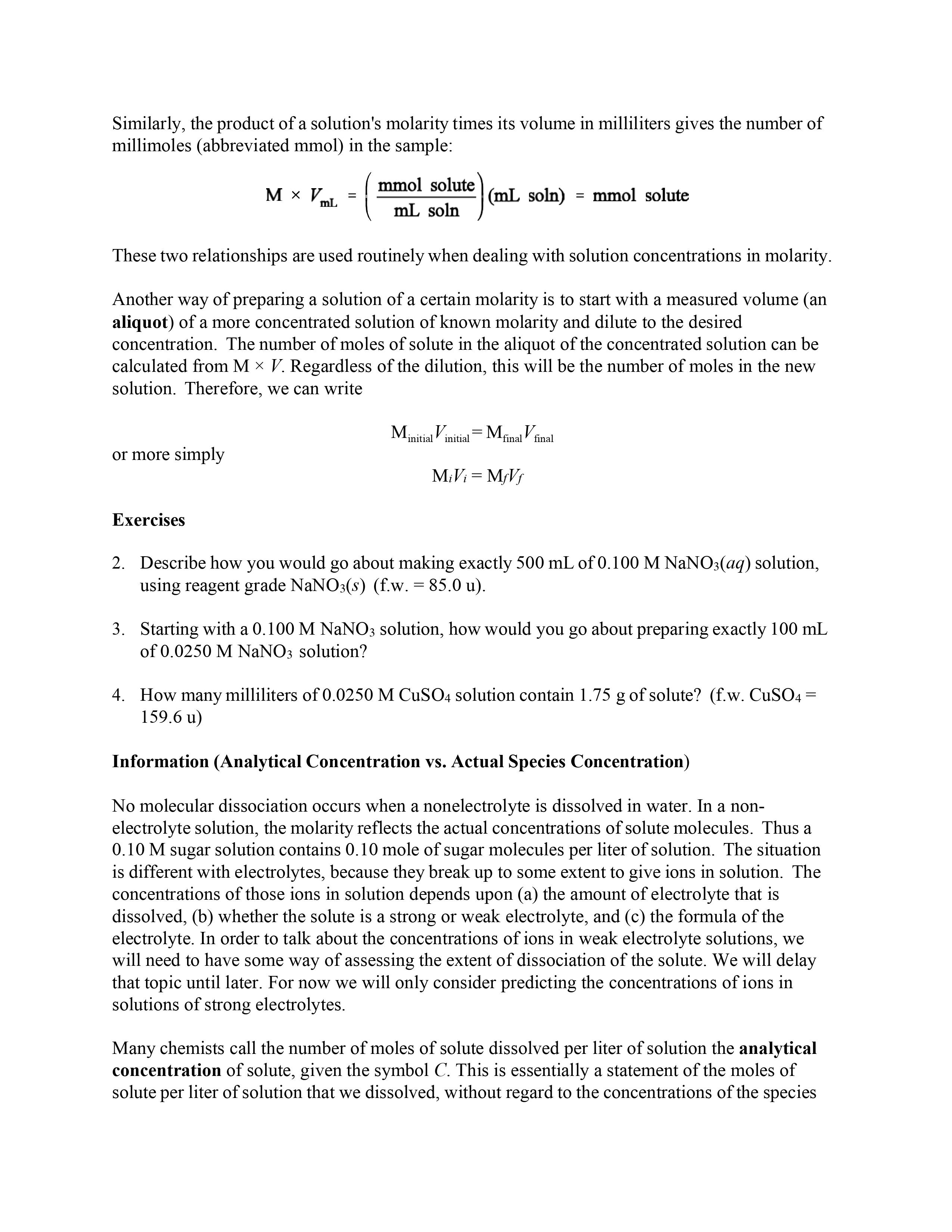Answered step by step
Verified Expert Solution
Question
1 Approved Answer
Similarly, the product of a solution's molarity times its volume in milliliters gives the number of millimoles ( abbreviated mmol ) in the sample: M
Similarly, the product of a solution's molarity times its volume in milliliters gives the number of
millimoles abbreviated mmol in the sample:
soln mmol solute
These two relationships are used routinely when dealing with solution concentrations in molarity.
Another way of preparing a solution of a certain molarity is to start with a measured volume an
aliquot of a more concentrated solution of known molarity and dilute to the desired
concentration. The number of moles of solute in the aliquot of the concentrated solution can be
calculated from Regardless of the dilution, this will be the number of moles in the new
solution. Therefore, we can write
or more simply
Exercises
Describe how you would go about making exactly of solution,
using reagent grade fw
Starting with a solution, how would you go about preparing exactly
of solution?
How many milliliters of solution contain of solute? fw
Information Analytical Concentration vs Actual Species Concentration
No molecular dissociation occurs when a nonelectrolyte is dissolved in water. In a non
electrolyte solution, the molarity reflects the actual concentrations of solute molecules. Thus a
sugar solution contains mole of sugar molecules per liter of solution. The situation
is different with electrolytes, because they break up to some extent to give ions in solution. The
concentrations of those ions in solution depends upon a the amount of electrolyte that is
dissolved, b whether the solute is a strong or weak electrolyte, and c the formula of the
electrolyte. In order to talk about the concentrations of ions in weak electrolyte solutions, we
will need to have some way of assessing the extent of dissociation of the solute. We will delay
that topic until later. For now we will only consider predicting the concentrations of ions in
solutions of strong electrolytes.
Many chemists call the number of moles of solute dissolved per liter of solution the analytical
concentration of solute, given the symbol This is essentially a statement of the moles of
solute per liter of solution that we dissolved, without regard to the concentrations of the species

Step by Step Solution
There are 3 Steps involved in it
Step: 1

Get Instant Access to Expert-Tailored Solutions
See step-by-step solutions with expert insights and AI powered tools for academic success
Step: 2

Step: 3

Ace Your Homework with AI
Get the answers you need in no time with our AI-driven, step-by-step assistance
Get Started


